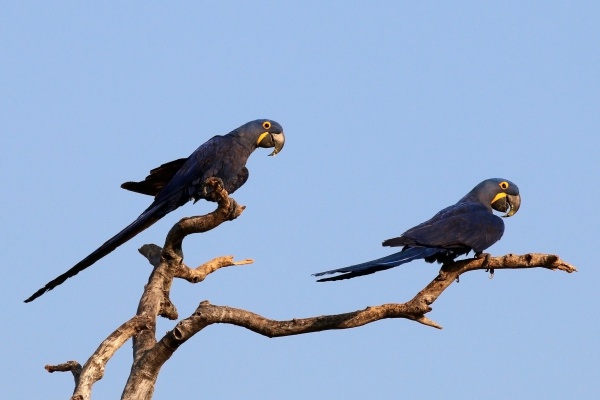Facts About Hyacinth macaw
The hyacinth macaw, also known as the hyacinthine macaw, is an extraordinary parrot native to central and eastern South America. It is the largest species of macaw and the largest flying parrot, reaching approximately one meter in length. Sadly, this magnificent bird is vulnerable due to habitat loss and capture for the pet trade.
First described by English physician and ornithologist John Latham in 1790, the hyacinth macaw is one of two extant species in the South American macaw genus Anodorhynchus. It is easily recognized by its striking blue feathers, yellow eye rings, and vibrant yellow patches around the eyes and beneath the beak. Their diet primarily consists of Brazil nuts, and they possess remarkably strong beaks to crack open these hard nuts and seeds.
These macaws nest between July and December, typically in tree cavities or on cliff faces. They generally lay one or two eggs, but often only one chick survives to fledge. The species inhabits three main populations across South America, thriving in environments ranging from palm swamps to woodlands.
Conservation efforts are underway to protect these birds. In Brazil and Bolivia, laws have been enacted to safeguard them, and initiatives such as the Hyacinth Macaw Project in Mato Grosso do Sul are making a significant impact. Despite these efforts, the species continues to face severe threats from habitat loss, illegal trapping, and the pet trade.
To aid the hyacinth macaw, conservationists are assessing their population status, constructing artificial nests, and enforcing laws against illegal trade. Moving forward, it is crucial to manage these populations separately to maintain genetic diversity and implement measures to protect their habitats and reduce trapping. Preserving the hyacinth macaw is vital for ensuring its continued existence in the wild.

 Chile
Chile